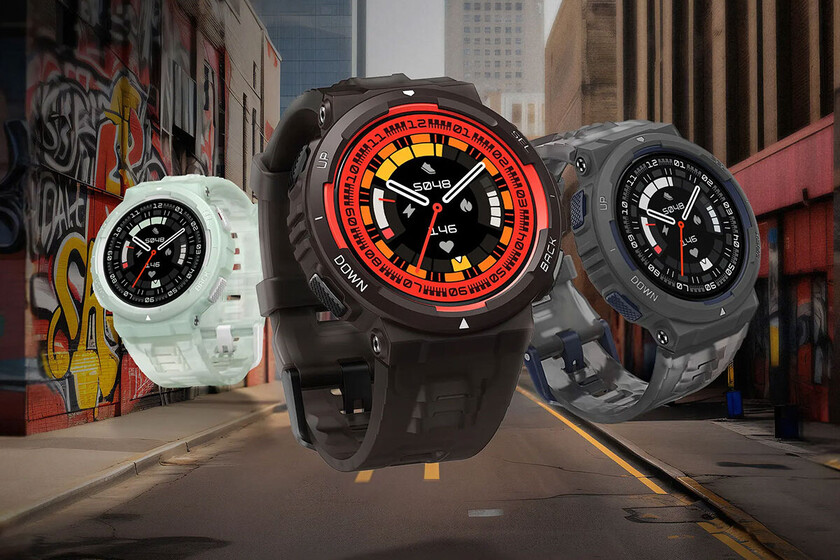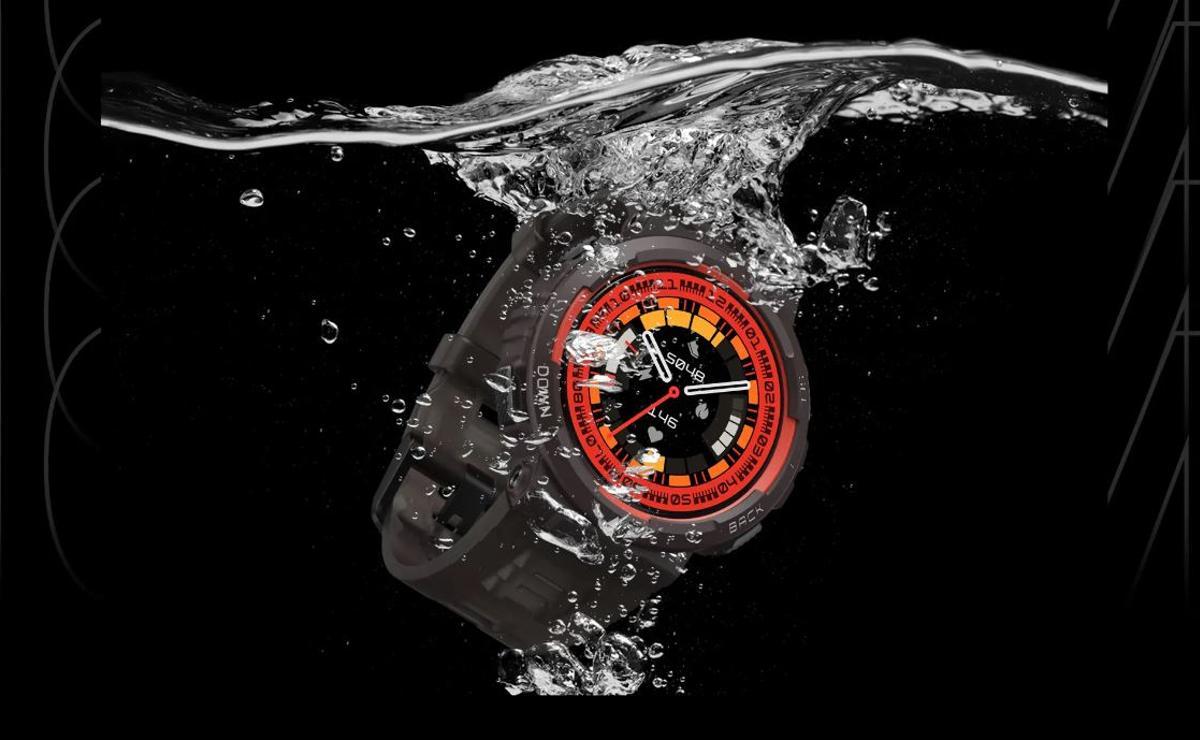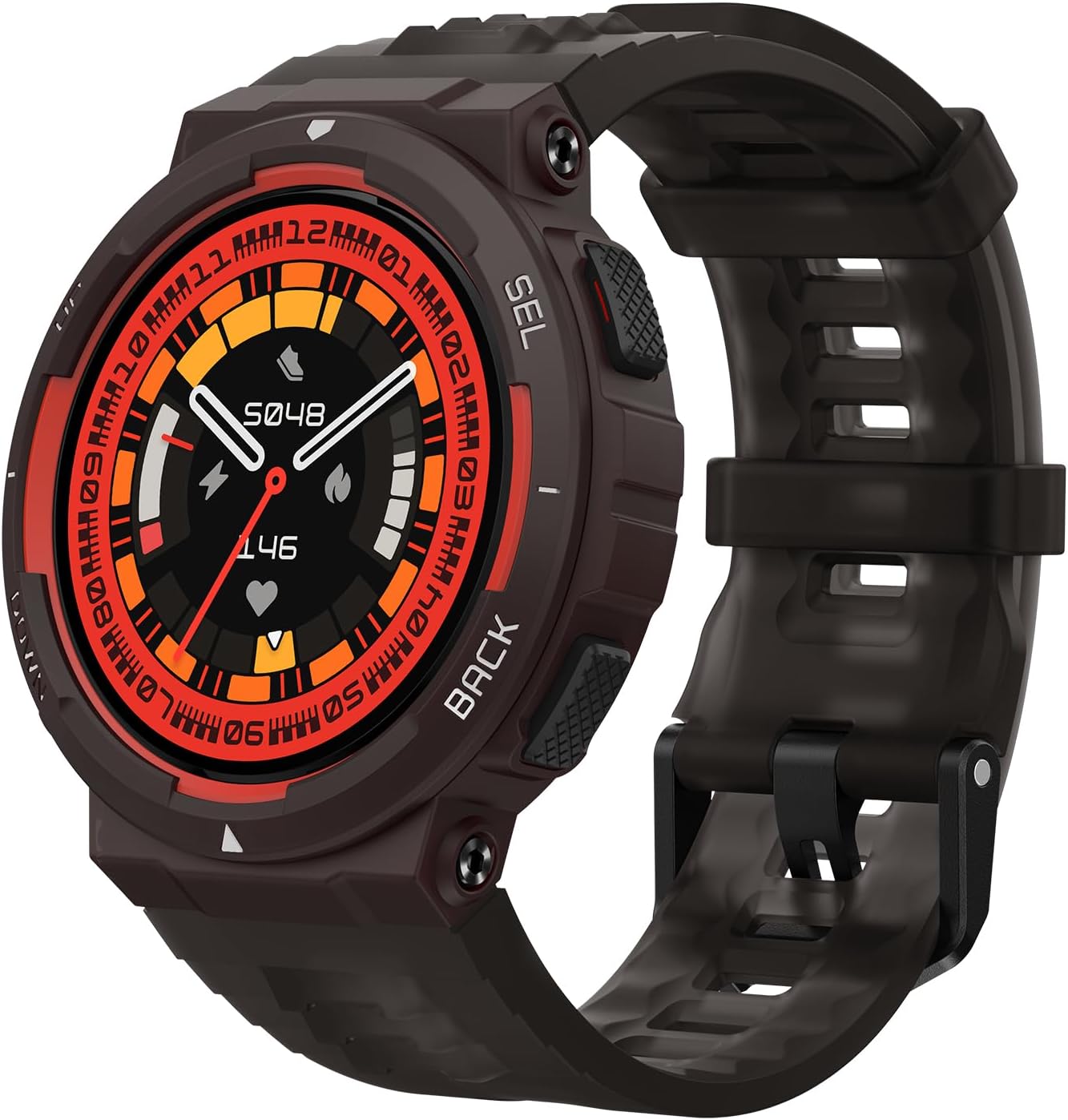Sometimes you want a smartwatch that just gets out of the way and keeps up with you on the trail. Other times, you want one that can actually tell you how your body’s doing—and maybe help you pay for coffee too. That’s exactly where the Amazfit Balance and Amazfit Active Edge split.
They both come from the same brand, yes. They both track your steps, your heart, your runs, your sleep. But one is quietly collecting data to help you make better lifestyle decisions, and the other is built like a tank to survive your fifth hill sprint in the rain.
So which one actually gives you the better experience—day in, day out? Let’s dive in.
Looks, build, and how they wear

You don’t even have to turn them on to feel the difference. The Balance has that clean, modern look—aluminum alloy frame, thin 10.6 mm profile, and a smooth finish that wouldn’t look out of place at a client meeting. It feels premium, but not flashy.
The Active Edge doesn’t care about sleek. It’s chunkier at 12 mm, unapologetically plastic, and looks like it’s ready to take a hit. The dual-color case adds a bit of fun, but this thing’s built for abuse, not elegance.
The Balance has two buttons—one of them a crown—so it feels intuitive and modern. The Edge, though? Four flat buttons, evenly placed, so you can still operate it with gloves, sweat, or wet fingers. It’s rugged by design.
So it comes down to this: Are you looking for something you’ll wear to work and dinner? Or something that can survive burpees in the mud?
Display that talks (or doesn’t)
The screen tells the whole story.
The Balance packs a 1.5-inch AMOLED panel with 480 x 480 resolution. It’s sharp, bright, colorful—it feels alive. Animations glide, text pops, and watch faces look like they belong on a premium device.
The Active Edge goes for a 1.32-inch TFT display with 360 x 360 resolution. That means less detail, more washed-out colors, and no real wow factor. But it’s easier on the battery and handles bright outdoor light better. It’s not exciting, but it’s functional.
So if visuals matter to you—if you want your watch to look good every time you lift your wrist—the Balance wins, no contest.
Waterproofing and rough-use readiness
Both watches can swim. But the Active Edge goes deeper. Literally.
5 ATM for the Balance—it can handle pool laps, showers, rain. But the Active Edge is rated at 10 ATM, which means you can take it snorkeling, paddleboarding, or through a waterfall and not blink.
That, combined with its bulkier build, makes it way more confident in rough terrain. The Balance is resistant. The Edge is unbothered.
Sensors: body IQ vs fitness essentials

Now we’re getting serious.
The Balance comes loaded with the BioTracker 5.0 PPG, 8 photodiodes, 2 LEDs, plus BIA for body composition, temperature, air pressure, and even ambient light. That means it’s not just telling you your heart rate. It’s estimating body fat percentage, muscle mass, readiness scores, and how well you slept in actual detail.
The Active Edge strips all that down to the basics. Heart rate sensor (BioTracker 4.0, most likely), gyroscope, accelerometer. It’s a fitness watch. It tracks what you’re doing. Not what your organs are thinking about doing.
GPS is dual-band on the Balance, with circular polarization and support for six satellites. That’s high-end location tracking for dense cities or remote forests. The Edge? Five systems, no dual-band. Still good, just not as bulletproof.
So if you want your watch to tell you more about what’s going on inside your body, the Balance is on a whole different level.
Battery: who lasts longer?
Funny twist here: on paper, the Active Edge lasts longer in normal use—16 days vs 14 for the Balance. But that’s mostly because it has a simpler screen and fewer sensors chugging away in the background.
In GPS mode, though, the Balance pulls ahead—26 hours vs 20. So if you’re doing long-distance runs or all-day hikes, that extra six hours might matter.
Both watches go up to 24 days in Battery Saver Mode, so either way, you’re getting excellent endurance compared to most smartwatches. No stress about nightly charging.
Smart extras that set them apart
This is where the Balance quietly starts acting like a real smartwatch.
It has NFC for contactless payments. Music storage—2.3GB worth—so you can leave your phone behind. Wi-Fi for fast syncing. And with Zepp OS 3.+, it’s a smoother, more customizable experience overall.
The Active Edge skips all that. No music storage. No NFC. No Wi-Fi. Just Bluetooth, notifications, and basic tracking.
Both can handle Bluetooth calling, so you won’t miss a call on your run. But only one can play music straight to your earbuds, or buy a snack after your workout.
Software: one polished, one practical
Zepp OS makes both of these watches run, but they don’t run the same.
Balance uses version 3.+—it’s refined, full of widgets, smooth transitions, and better app support. It feels closer to a premium smartwatch than a fitness tracker.
The Active Edge uses Zepp OS 2.+—it’s fast, it’s efficient, but it’s basic. It works, but it doesn’t surprise you.
If you like swiping through pretty graphs, smart animations, and more personalization, the Balance makes every interaction feel more polished.
Health features: brains behind the numbers

Here’s where the Balance earns its name. It doesn’t just collect data—it interprets it.
You get mental readiness scores, stress tracking, temperature changes, and recovery insights. The BIA sensor adds body composition tracking, which is rare for a watch in this price range.
It’s trying to be a wellness assistant—not just a workout tracker.
The Active Edge? No fluff. No AI. No body fat data. Just the essentials: heart rate, sleep, movement. It’s dependable, but doesn’t dig deep.
Who it’s for—and who it’s not
The Balance is for the user who wants more than step counts. You care about trends. About recovery. About how your sleep might affect your productivity. And you want your watch to look good doing it.
The Active Edge is for the user who just wants a tough, reliable, no-fuss companion for the gym, the trail, or the pool. It’s not trying to impress—it’s just there to do the job.
So, which one actually wins?
Let’s not tiptoe around it—the Amazfit Balance delivers the more complete, intelligent, and satisfying smartwatch experience.
It tracks more, shows more, connects more, and looks better doing it. From the AMOLED display to the dual-band GPS, from NFC to recovery insights—it punches way above its weight.
The Active Edge isn’t bad—it’s just different. It’s for people who don’t need all that. Who’d rather have physical buttons than a body fat reading. Who want their watch to be tough, not smart.
But for most users? Balance is the one that feels like a smartwatch in 2025 should. Helpful. Polished. Informed. Ready.


